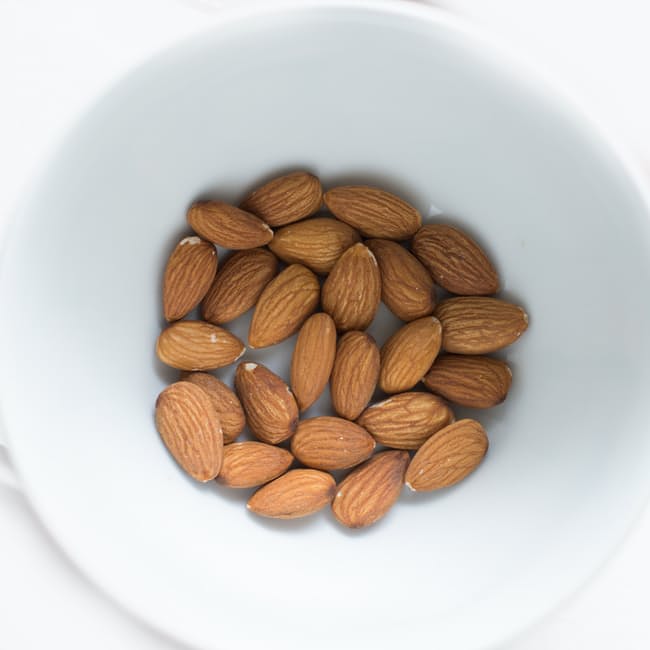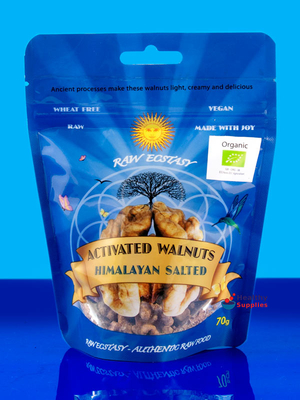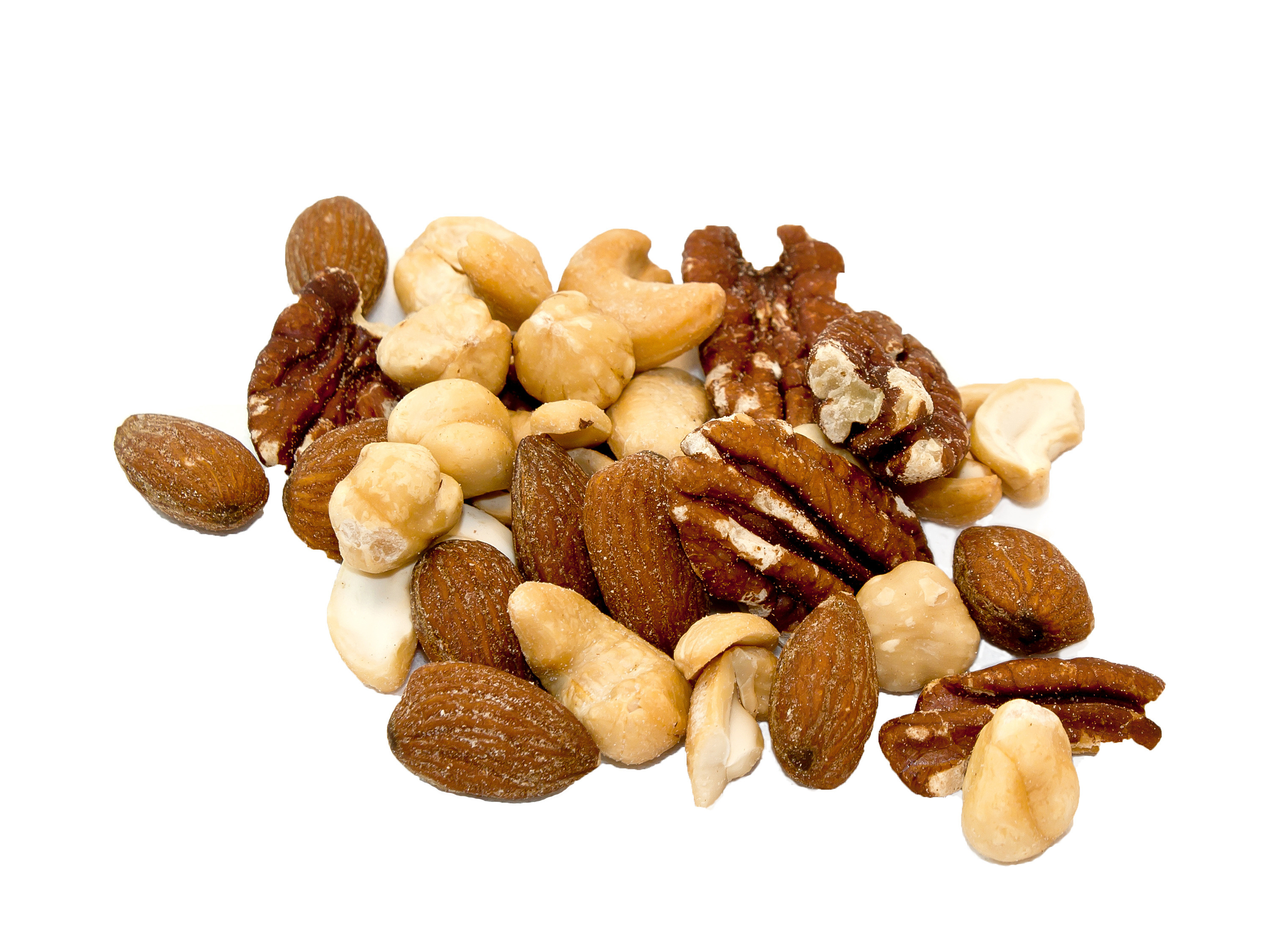Totally Nuts
Jan 2, 2017
Posted by: Monique Parker

You never guess what Santa put in my stocking last Christmas? A bag of ‘Raw Ecstasy’ activated almonds with raw chocolate! Now what Santa didn’t know is that I have been activating nuts myself for a while now.
I can hear you think, “what on earth are activated nuts”? It was exactly what I thought the first time I set eyes on a bag of these delicious nuts, but my curiosity got the better of me and I had to buy them and try. I was hooked…. Activated nuts taste less bitter and are much easier to digest.
According to Wikipedia “a nut is a fruit composed of a hard shell and a seed, which is generally edible……many nuts (in the culinary sense), such as almonds, pecans, pistachios, walnuts, and Brazil nuts are not nuts in a botanical sense. Common usage of the term often refers to any hard-walled, edible kernel as a nut”. It’s confusing…...think of peanuts being legumes and cashew ‘nuts’ technically being the seeds of the cashew apple.
To get back to activation, let’s think of the nut being a seed. In nature seeds germinate in the soil when they are exposed to, and soaked in rain water. Nuts contain enzyme inhibitors which prevent the seeds from sprouting too early, as conditions must be just right. But these enzyme inhibitors can be hard on the human digestive system. Nuts also contain phytic acid, polyphenols and goitrogens (these disrupt the production of thyroid hormones).
Phytic acid is the storage form of phosphorus in plants. Phytic acid binds to important minerals (and then becomes phytate), such as calcium, iron, and zinc, in the digestive tract, making them less absorbable. This can cause mineral deficiencies in people who heavily rely on foods containing phytic acid, such as nuts, grains, and legumes, for example vegans and vegetarians. However, phytates themselves are not totally the bad guys, they have some health benefits, including anti-inflammatory effects, lowering blood glucose and lipids. Complicated, I know. Everything in moderation springs to mind.
Nuts can also contain toxic substances such as aflatoxin, a natural toxin produced by the Aspergillus flavus fungus. This fungus can contaminate foods such as grain, nuts, and legumes (peanuts!).
So, what is the activation of nuts exactly and why do people do it?
Having explained the existence of nutritional inhibitors and toxic substances in nuts and the consequences, it makes sense to get rid of them. It is not a new trend as our ancestors used to soak, sprout and ferment foods to make them edible and easier to digest. Enzyme inhibitors are neutralised and it boosts production of several beneficial enzymes.
This is how it goes….
- Put the nuts (whatever kind of nuts you like, or a selection as long as they haven’t been roasted or blanched) in a big glass jar (I use a mason jar)
- Dissolve 2 tablespoons of sea salt in some warm, filtered water
- Cover the nuts with the water and close the jar
- Make sure there is some space in the jar for the nuts to expand so do not fill the jar right to the top
- Leave the nuts to soak at room temperature (see chart for soaking time)
|
NUTS |
SOAKING TIME |
|
Almonds |
12 hours or 48 hours if they have skins |
|
Walnuts |
4 hours |
|
Cashew nuts |
2-3 hours |
|
Brazil nuts |
3 hours |
|
Hazelnuts |
8 hours |
|
Macadamia nuts |
2 hours |
|
Pecan nuts |
6 hours |
|
Pistachios |
8 hours |
|
SEEDS |
|
|
Pumpkin seeds |
8 hours |
|
Sunflower seeds |
8 hours |
|
Sesame seeds |
8 hours |
- When the soaking time is up, you drain the nuts and you rinse them thoroughly
- Dry the nuts well with kitchen towel
- If you would like to flavour the nuts, take a large Ziploc bag and put your spices or other flavourings in the bag with the nuts and shake until they are all covered
- Flavourings you could use are salt, pepper, turmeric, chili flakes, dried herbs, cinnamon etc.
I particularly like my friend Sam’s combination of Himalayan salt, cinnamon and tamari!
- Spread the nuts on a layer of greaseproof paper on a baking tray
- You can use a dehydrator obviously to dry the nuts but if you don’t own one then the oven will do the job just fine. My oven has a setting that keeps the oven at a constant temperature of 60 degrees without turning itself off.
- Set the oven for a low temperature of 50 or 60 degrees Celsius (120-140 degrees Fahrenheit)
- Leave the nuts to dry for 12 hours at least
- Before you store the nuts, make sure they have cooled down completely.
- Enjoy!
 If money is no issue and activating nuts yourself is too much trouble for you, I can highly recommend the ones that Santa put in my stocking. http://www.rawecstasy.co.uk/
If money is no issue and activating nuts yourself is too much trouble for you, I can highly recommend the ones that Santa put in my stocking. http://www.rawecstasy.co.uk/
For those of you who are worried about the calories and fat content of nuts….
According to Sze Yen Tan et al (2014)[1] nuts are a high-fat, energy-dense food, but the research shows that nuts don’t compromise, and may even help weight management. This is because they have positive dietary effects like suppressing hunger and the desire to eat, and they can increase fullness. Although energy determines your body weight and composition, it is the macronutrient content among others that will determine the beneficial dietary effects on health.
Nuts are rich in protein and they are valuable sources of unsaturated fats, minerals, vitamins, antioxidants, and fibre, so a good part of a healthy diet, unless you have a nut allergy of course.

Sources:
Hunt JR (2003), ‘Bioavailability of iron, zinc, and other trace minerals from vegetarian diets’, Am J Clin Nutr. 2003 Sep;78(3 Suppl):633S-639S. https://www.ncbi.nlm.nih.gov/pubmed/12936958
Schlemmer U, Frølich W, Prieto RM, Grases F. (2009), ‘Phytate in foods and significance for humans: food sources, intake, processing, bioavailability, protective role and analysis’, Mol Nutr Food Res. 2009 Sep;53 Suppl 2:S330-75. doi: 10.1002/mnfr.200900099. https://www.ncbi.nlm.nih.gov/pubmed/19774556
Sze Yen Tan, Jaapna Dhillon, and Richard D Mattes (2014), ‘A review of the effects of nuts on appetite, food intake, metabolism, and body weight’, Am J Clin Nutr July 2014 vol. 100 no. Supplement 1412S-422S
Torre M, Rodriguez AR, Saura-Calixto F. (1991), ‘Effects of dietary fiber and phytic acid on mineral availability’, Crit Rev Food Sci Nutr. 1991;30(1):1-22. https://www.ncbi.nlm.nih.gov/pubmed/1657026
Zhou JR, Erdman JW Jr. (1995), ‘Phytic acid in health and disease’, Crit Rev Food Sci Nutr. 1995 Nov;35(6):495-508.
https://www.ncbi.nlm.nih.gov/pubmed/8777015
http://thrivescience.com/articles/why-you-need-to-soak-your-almonds
https://wellnessmama.com/59139/soaking-nuts-seeds/
https://chriskresser.com/another-reason-you-shouldnt-go-nuts-on-nuts/
http://www.drweil.com/diet-nutrition/nutrition/are-phytates-bad-or-good/
https://draxe.com/sprout/
http://www.westonaprice.org/health-topics/living-with-phytic-acid/
[1] Sze Yen Tan, Jaapna Dhillon, and Richard D Mattes (2014), ‘A review of the effects of nuts on appetite, food intake, metabolism, and body weight’, Am J Clin Nutr July 2014 vol. 100 no. Supplement 1412S-422S






